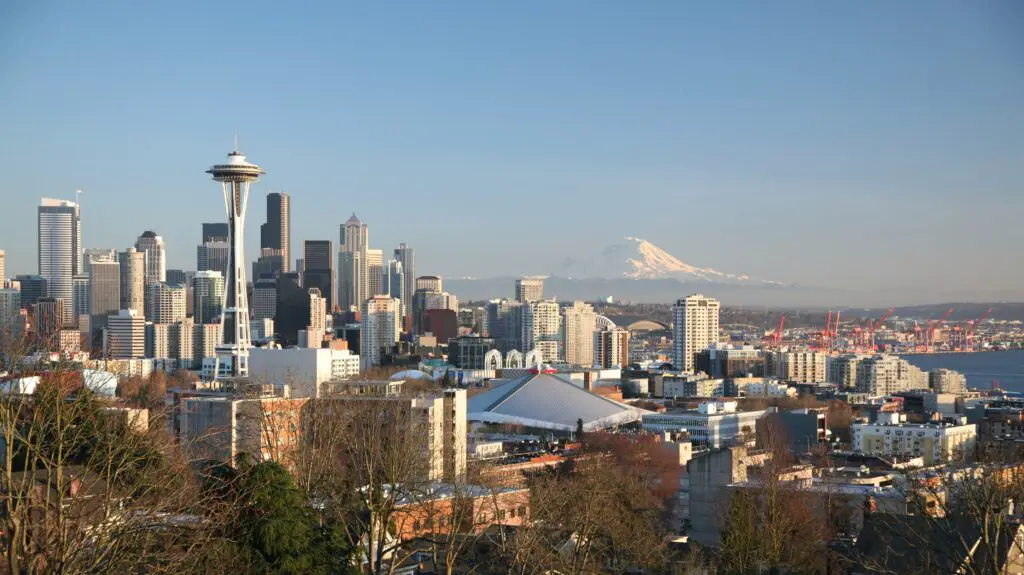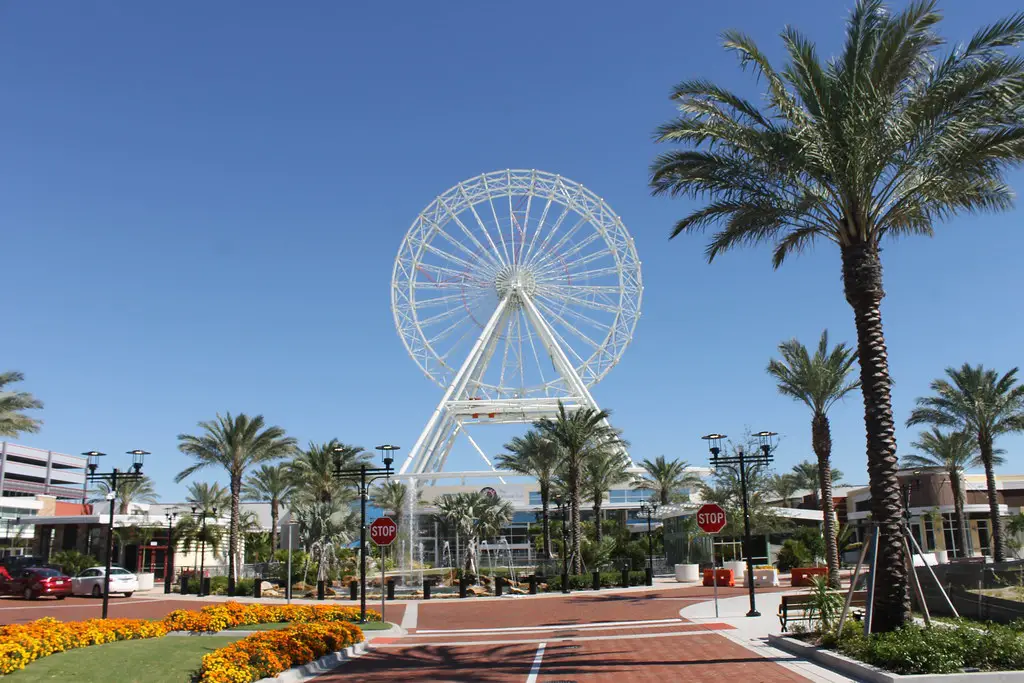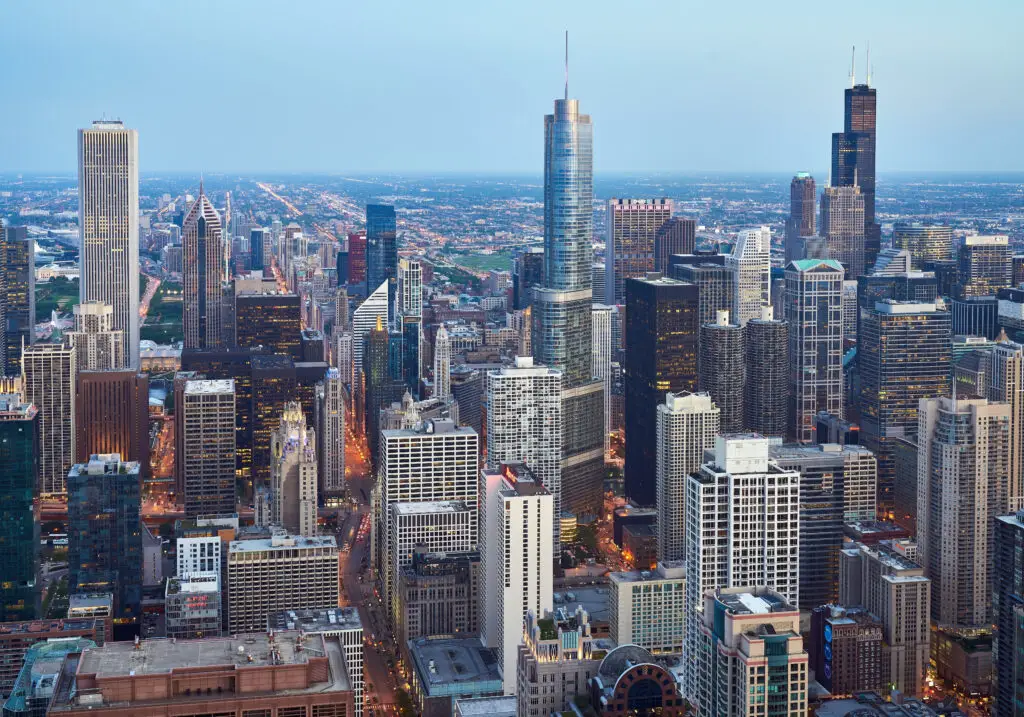The rental market is shifting dramatically in several major U.S. cities, leaving landlords struggling to fill vacancies and renters with unexpected bargaining power. Economic downturns, population shifts, and new construction have led to a decline in rental demand in some areas. While rising rents were once the norm, some cities are now experiencing a reversal, with prices dropping faster than expected. According to real estate experts, this trend could continue as more tenants opt for homeownership or relocate to more affordable regions. If you live in one of these 13 cities, you may be witnessing a rental market crash firsthand.
1. Austin, Texas

Austin was once a rental hotspot, but an oversupply of apartments is driving prices down. Forbes reports that the city’s rapid growth, particularly in tech-driven neighborhoods, led to an overestimation of demand. With companies laying off employees and remote work becoming more common, many renters are moving to cheaper cities. Landlords are now offering one or two months of free rent, lower security deposits, and flexible lease terms to fill vacant units.
The rental slowdown is particularly noticeable in high-end apartment complexes, where vacancies have increased significantly. Many landlords are finding it difficult to maintain occupancy rates without dramatically reducing rents. Austin’s affordability compared to cities like San Francisco once attracted an influx of new residents, but as home prices cool nationwide, more renters are considering buying instead. Unless job growth picks up or rental construction slows, the downward trend in rents is likely to persist.
2. Phoenix, Arizona

Phoenix’s rental market is facing one of the sharpest downturns in the country, with prices falling month after month. The Arizona Republic notes that a record number of new apartment units were completed in the past year, leading to an oversupply. During the pandemic, many people moved to Phoenix for its lower cost of living, but as inflation rises and extreme heat becomes a concern, some are leaving. This shift has created a renter’s market, with landlords cutting rents and offering incentives to remain competitive.
Neighborhoods that experienced the most rapid growth in rental prices are now seeing the largest declines. Many luxury apartment complexes built during the boom are struggling to find tenants willing to pay high rents. Renters who signed leases at peak prices are choosing not to renew, opting instead for newly available units with better deals. Experts predict that Phoenix’s rental market will continue to struggle until population growth stabilizes.
3. Nashville, Tennessee

Nashville has been a popular relocation destination in recent years, but its rental market is cooling fast. The Tennessean attributes this decline to an oversupply of new rental units, particularly in downtown areas. Developers rushed to meet demand during Nashville’s population surge, but now there are more apartments than renters. As a result, prices are dropping, and landlords are offering free rent or discounted move-in costs to attract tenants.
The city’s once-thriving entertainment and tourism industry has also seen shifts, impacting short-term and long-term rental demand. Many renters who moved to Nashville for work are reconsidering their options due to rising living costs. The suburban rental market remains more stable, but city-center apartments are experiencing the most significant declines. Without a major influx of new residents, Nashville’s rental prices may continue to decline throughout the year.
4. Atlanta, Georgia

Atlanta’s rental market is in trouble as demand struggles to keep up with new apartment construction. The Atlanta Journal-Constitution reports that vacancy rates have increased due to an oversupply of units, particularly in luxury developments. While Atlanta remains a popular city, rising homeownership rates and remote work flexibility are reducing rental demand. More renters are choosing to buy homes in the suburbs rather than pay high city rents.
With so many units available, landlords are being forced to lower rents and offer more concessions. Renters now have the upper hand in negotiations, with many securing lower rates and better lease terms. The areas hit hardest include neighborhoods with the highest number of new developments, such as Midtown and Buckhead. If economic conditions don’t shift, landlords may continue to struggle with high vacancy rates for the foreseeable future.
5. Las Vegas, Nevada

Las Vegas is seeing a rental slowdown as more tenants opt for homeownership or move to nearby cities. The rental boom that occurred during the pandemic has faded, leaving an oversupply of vacant apartments. With tourism patterns normalizing and more short-term rentals becoming available, demand for long-term leases has declined. This trend has led to significant rent reductions in some of the city’s most expensive areas.
Many landlords who raised rents during the peak of demand are now being forced to lower them to stay competitive. Some are offering incentives like free utilities or parking to attract tenants. The shift is especially noticeable in high-rise developments and newly built suburban communities. Without an increase in population growth, Las Vegas may continue to experience a weak rental market.
6. Denver, Colorado

Denver’s rental market is softening due to a construction boom that has outpaced demand. Many new apartment buildings are sitting with empty units as renters reconsider the high cost of living in the city. Landlords are offering discounts and incentives to keep tenants from leaving for more affordable areas. The rental market is expected to remain weak until supply and demand reach a better balance.
Suburban areas outside of Denver are still experiencing steady rental demand, but the downtown market is struggling. Many renters who moved to Denver for job opportunities are now facing economic uncertainty and choosing to downsize. The high number of new apartments hitting the market is making it difficult for landlords to maintain profitability. Until economic conditions improve, Denver’s rental market is unlikely to see a rebound.
7. Seattle, Washington

Seattle’s rental market, once one of the most expensive in the country, is finally cooling down. The combination of an increase in available apartments and a shift toward remote work has reduced rental demand. Many renters who once paid premium prices to live close to tech hubs are now relocating to more affordable cities. As a result, landlords are being forced to drop prices to attract tenants.
Some of Seattle’s most expensive neighborhoods, like Capitol Hill and Belltown, have seen the sharpest declines. Luxury apartments that once had waiting lists now offer move-in specials to fill vacancies. With more companies embracing remote work, the city’s rental market may continue to struggle. Unless Seattle sees a major economic shift, rental prices could remain lower than they were at their peak.
8. Portland, Oregon

Portland’s rental market has weakened as more people leave the city for more affordable areas. The rising cost of living and economic uncertainty have caused a slowdown in rental demand. Many landlords are offering discounts and concessions to attract tenants, particularly in high-rise developments. Without an increase in job opportunities or population growth, the market could continue to decline.
Neighborhoods that once saw rapid rent increases are now experiencing price drops. Many renters who moved to Portland for work are now reconsidering due to high taxes and cost-of-living concerns. The oversupply of rental units has made it easier for tenants to negotiate lower prices. If this trend continues, Portland’s rental market may not recover quickly.
9. San Francisco, California

San Francisco’s rental market has been struggling for years, and the trend continues as more people leave the city. With the rise of remote work, many tech workers have relocated to more affordable areas, reducing demand for expensive rentals. High taxes, cost-of-living concerns, and an increase in available rental units have further weakened the market. Landlords are now slashing rents and offering perks like free parking, discounted security deposits, and even cash incentives to attract tenants.
The downtown area has been hit the hardest, as businesses remain slow to recover from pandemic-related closures. Many luxury apartments that once had waiting lists are now offering deep discounts just to fill vacancies. While some renters are returning to the city, they have more bargaining power than ever before. Unless job growth surges or more companies return to in-person work, San Francisco’s rental market will likely remain soft.
10. Minneapolis, Minnesota

Minneapolis is seeing a rental market downturn due to an oversupply of apartments and shifting migration patterns. With many renters seeking more affordable options in the suburbs, landlords in the city are facing high vacancy rates. The demand for rentals in downtown areas has dropped significantly, forcing property owners to reduce prices. Some landlords are even waiving application fees and offering the first month free to attract tenants.
Economic uncertainty and rising crime rates in certain neighborhoods have also contributed to the rental slowdown. Many renters who once saw Minneapolis as an affordable alternative to bigger cities are now reconsidering. The rental market is especially weak in newly developed luxury buildings, where landlords struggle to maintain occupancy. Without a major shift in renter demand, Minneapolis may continue to see declining rental prices.
11. Orlando, Florida

Orlando’s rental market is experiencing a decline due to a mix of economic and seasonal factors. While the city saw a surge in demand during the pandemic, that demand has now leveled off. An increase in new apartment developments has led to a surplus of available units, creating a renter’s market. Landlords are responding by cutting prices and offering deals like free utilities and reduced move-in costs.
Tourism plays a major role in Orlando’s economy, and fluctuations in that industry impact rental demand. As travel patterns stabilize, fewer short-term renters are transitioning into long-term leases. Many Orlando residents are also choosing homeownership as mortgage rates stabilize, reducing the need for rental properties. If these trends continue, landlords may have to adjust their pricing strategies even further.
12. Chicago, Illinois

Chicago’s rental market is weakening, particularly in high-cost areas like downtown and the Loop. While some neighborhoods remain stable, others have seen a sharp decline in demand due to rising crime and economic concerns. Landlords are struggling to keep units occupied as more renters opt for suburban living or relocate to lower-cost cities. Many are offering discounted rent, lower security deposits, and flexible lease terms to entice tenants.
Another factor impacting Chicago’s rental market is the increase in property taxes, which has made it more expensive for landlords to operate. Some are passing those costs onto tenants, making rentals less attractive compared to homeownership. High vacancy rates in luxury apartment buildings have led to a price war among landlords trying to attract tenants. Unless the city sees a resurgence in demand, rental prices may continue to drop.
13. Charlotte, North Carolina

Charlotte has been one of the fastest-growing cities in the U.S., but its rental market is now experiencing a downturn. A construction boom led to a surge in new apartments, creating an oversupply in many parts of the city. Renters now have more choices than ever, and landlords are offering incentives to compete for tenants. Many properties are advertising discounts, flexible lease terms, and move-in specials to attract renters.
Some of the hardest-hit areas include those with newly developed luxury apartments, where rental prices are dropping the fastest. As more people consider homeownership, demand for rental units has softened. The banking and finance sectors, which drive much of Charlotte’s job market, have seen layoffs, contributing to the rental slowdown. Unless population growth keeps pace with development, Charlotte’s rental market may remain in decline.
